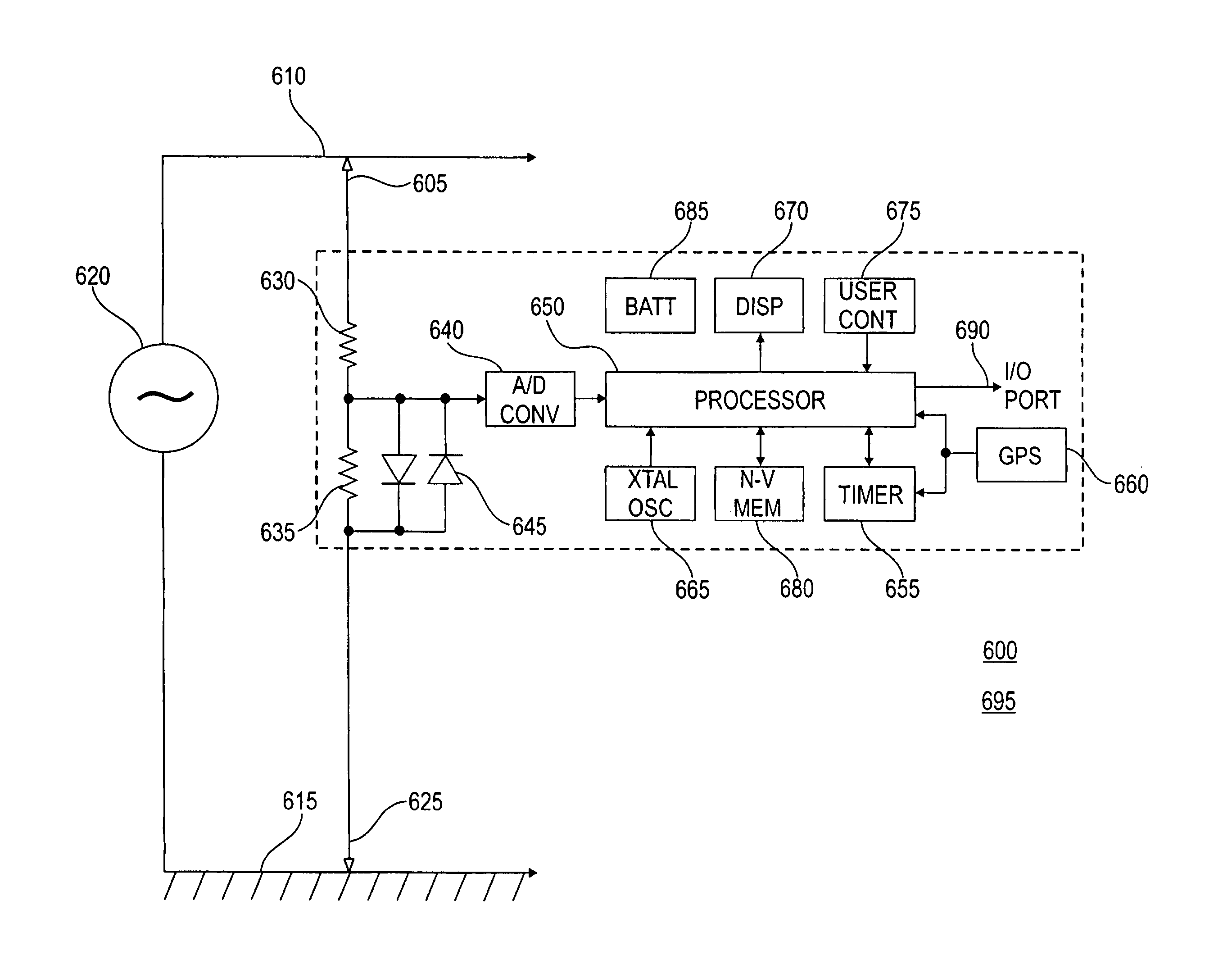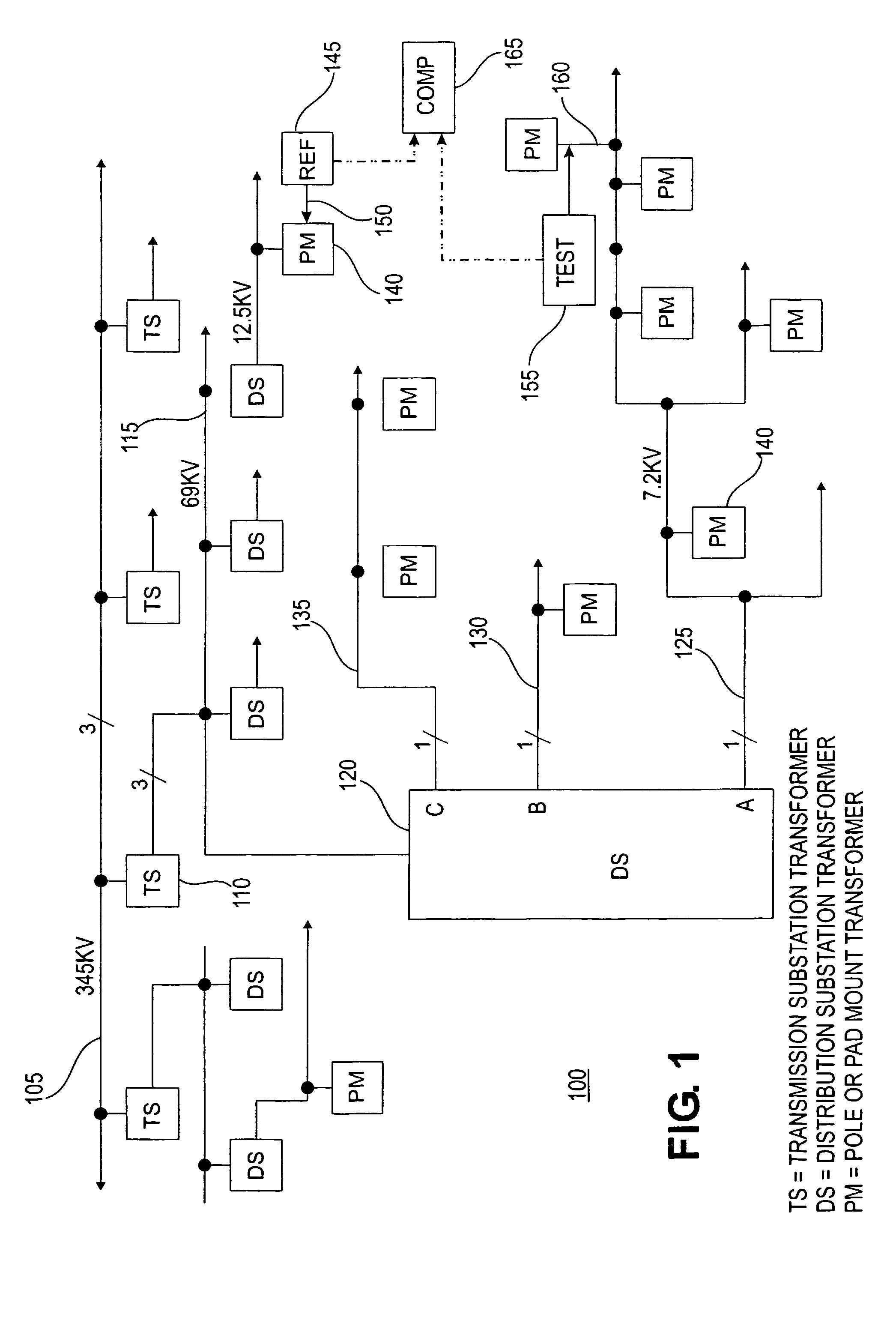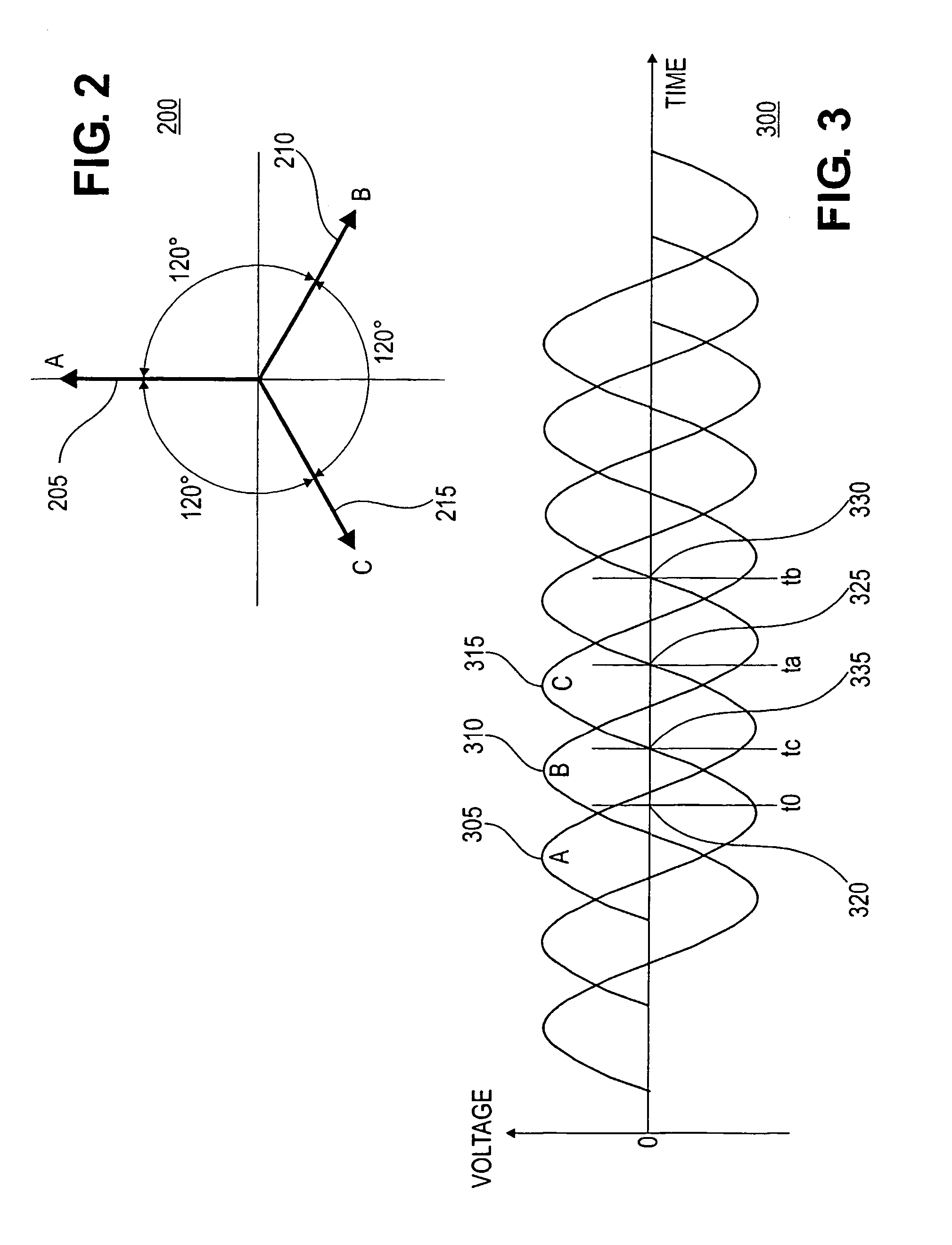Apparatus and method for identifying cable phase in a three-phase power distribution network
a technology of power distribution network and cable phase, which is applied in the direction of noise figure or signal-to-noise ratio measurement, phase sequence/synchronization indication, instruments, etc., can solve the problems of line being erroneously removed from a more lightly loaded phase, affecting the service of all customers on the branch being re-phased, and changing the load of each single-phase outpu
- Summary
- Abstract
- Description
- Claims
- Application Information
AI Technical Summary
Benefits of technology
Problems solved by technology
Method used
Image
Examples
Embodiment Construction
[0028]This discussion is concerned with power distribution at both 60 and 50 Hertz (Hz). To avoid confusion, all references to parameters of 50-Hz systems will be bracketed and will follow the same parameters for 60-Hz systems. For example, the phrase “for power at 60 [50] Hz, each cycle takes 16.67 [20.0] milliseconds” indicates that in a 60-Hz system each cycle takes 16.67 milliseconds, while in a 50-Hz system each cycle takes 20.0 milliseconds.
[0029]Also, it will be noted that in the preferred embodiments discussed herein mention is made of 120-volt and 240-volt commercial and residential voltages. Those skilled in the art will appreciate that these voltages are standard in the U.S. The use of other voltages, such as the 230-volt E.U. standard, does not depart from the spirit of the present invention.
[0030]The goal of the present invention is to provide the utility worker with an easy to use phase identification apparatus and method for identifying the phase of a line in a three-...
PUM
 Login to View More
Login to View More Abstract
Description
Claims
Application Information
 Login to View More
Login to View More - R&D
- Intellectual Property
- Life Sciences
- Materials
- Tech Scout
- Unparalleled Data Quality
- Higher Quality Content
- 60% Fewer Hallucinations
Browse by: Latest US Patents, China's latest patents, Technical Efficacy Thesaurus, Application Domain, Technology Topic, Popular Technical Reports.
© 2025 PatSnap. All rights reserved.Legal|Privacy policy|Modern Slavery Act Transparency Statement|Sitemap|About US| Contact US: help@patsnap.com



